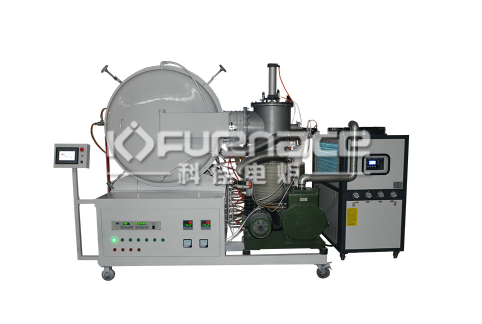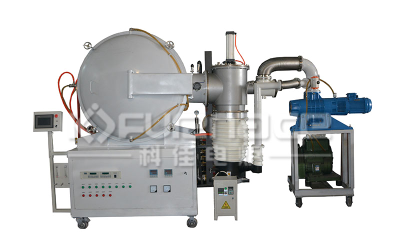When choosing an annealing vacuum furnace, multiple factors need to be considered to ensure that the selected equipment can meet specific process requirements and budgets. Let’s take a look at what aspects need to be considered when choosing an annealing vacuum furnace!

A commonly used vacuum furnace for annealing (click on the image to view product details)
Heating temperature:
The heating temperature range of annealing vacuum furnace is usually within a certain range, and the selection should be determined according to the annealing temperature requirements of the workpiece material.
Ensure that the heating temperature of the selected equipment can cover the required process temperature range and has a certain temperature margin to cope with possible process fluctuations.
Vacuum degree:
Vacuum degree is one of the important performance indicators of annealing vacuum furnace, which directly affects the quality and effect of workpiece annealing.
Select appropriate vacuum systems based on process requirements, such as low, medium, and high vacuum systems, and understand the types and performance of vacuum pumps.
Special attention should be paid to the use of special vacuum components such as slide valves and dry pumps when there are humidity requirements for heating objects.
Cooling method:
There are two cooling methods for annealing vacuum furnaces: water cooling and air cooling. When choosing, the cooling effect and service life of the equipment should be considered.
Water cooling methods usually have better cooling effects and stability, but also need to consider the supply and discharge of cooling water.
Heating element:
The material and form of heating elements have a significant impact on the performance of annealing vacuum furnaces.
Select suitable heating elements based on process requirements, such as resistance wires, silicon carbon rods, silicon molybdenum rods, etc., and understand their maximum operating temperature and heating efficiency.
Control system:
The control system is the core part of the annealing vacuum furnace, responsible for monitoring and adjusting the operating parameters of the equipment.
Choose a control system that is reliable, comprehensive, and user-friendly to ensure the stability and safety of the manufacturing process.
Pay special attention to whether the control system has monitoring, fault display, recording and other functions, as well as whether it supports both manual and automatic working modes.
Furnace structure:
The structural form (vertical or horizontal) and size of the furnace body should be determined according to the size, shape, and quantity of the workpieces.
Vertical furnaces are suitable for small or slender workpieces, while horizontal furnaces are more suitable for large or heavy workpieces.
The material and insulation performance of the furnace body are also factors that need to be considered.
After-sale service:
Choose manufacturers or suppliers with good after-sales service and reputation to ensure timely technical support and maintenance services during use.
Budget:
Select the appropriate annealing vacuum furnace based on the budget range to ensure that the selected equipment meets expectations in terms of cost-effectiveness.

Small vacuum furnace for annealing (click on the picture to view product details)
So, when choosing an annealing vacuum furnace, multiple factors such as heating temperature, vacuum degree, cooling method, heating elements, control system, furnace structure, after-sales service, and budget need to be considered. By considering these factors comprehensively, it can be ensured that the selected equipment can meet specific process requirements and budget requirements.Click to learn more vacuum furnaces! Or click on online customer service to learn more about product information!